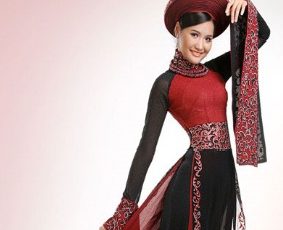The Vietnamese conical hat
If we were to present Vietnamese charm, the conical hat worn by the Vietnamese is certainly a powerful symbol of the country. Very light, even fragile, this object made of wood and bamboo stems covered with latanier leaves is worn by women from the North to the South, regardless of social background, rich or poor, young or old.
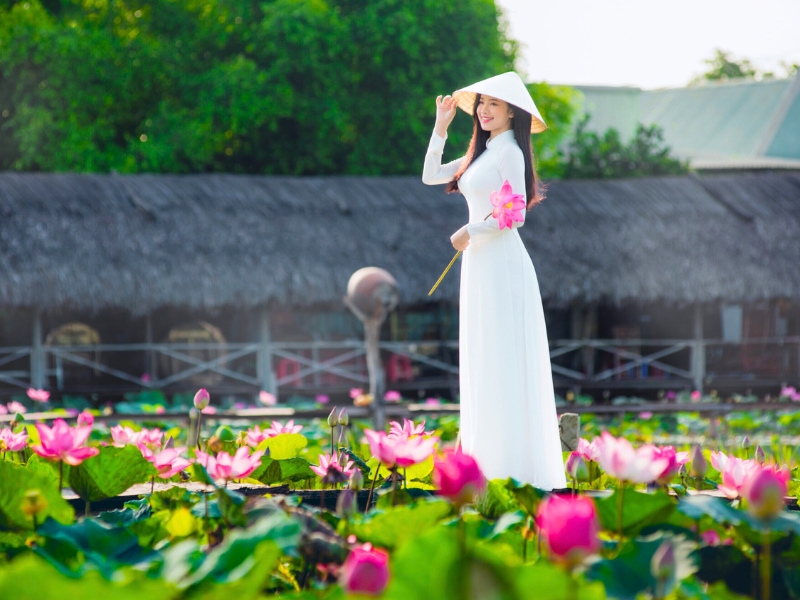
The image of the conical hat in Vietnamese life
In the Western imagination, the image of conical hats is almost inseparable from that of Vietnamese women. Women and young girls wear them when they work in the rice fields. Grandmothers often use them as a fan to help their grandchildren fall asleep on hot days. At weddings, a conical hat can replace the words a mother wants to say to her daughter, placing it on her head before leaving her .
Nowadays, many foreign tourists wear conical hats as typical Vietnamese souvenirs.
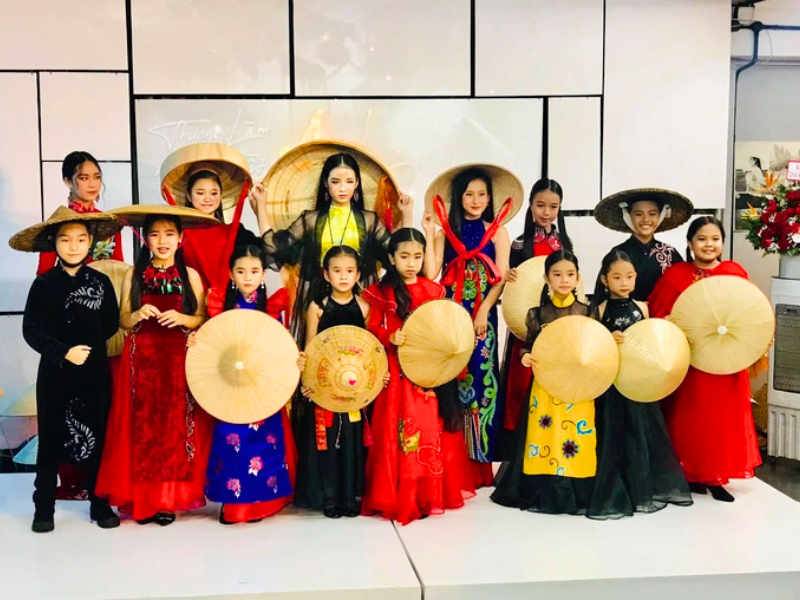
These Vietnamese hats are also increasingly present in artistic performances or fashion shows, or even beauty contests, often worn with traditional Vietnamese dresses the ao dai . Such performances are often very applauded. The famous Italian collector Alberta Ferrerti once presented a collection in which we find renovated conical hats full of colors!

Vietnamese hat and its varieties
Besides the conical hats "non la", there is another model of hat also made from palm leaves called non quai thao . This model has a rather round, flat shape, especially very wide (diameter of 70-8m cm). Today, these hats are mainly used in folk shows, especially for singing shows in the province of Bac Ninh in the North of Hanoi. But until the beginning of the 20th century, it was often worn by women in North Vietnam.
The conical hat also for men
On the other hand, while most people are used to seeing women's conical hats, few people know that there is one for men; it is in fact almost identical to the one for women, it is simply bigger!
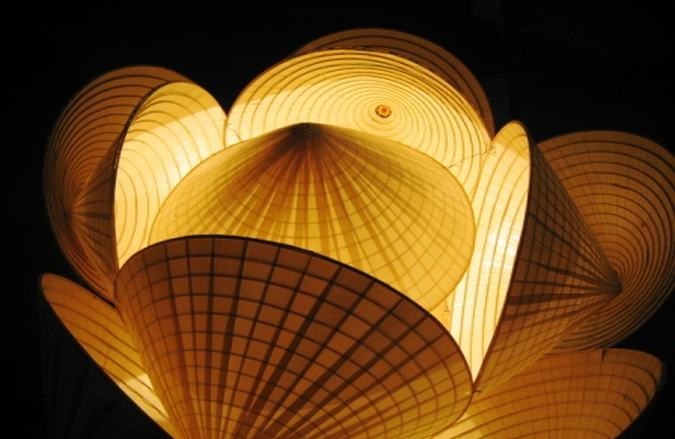
Origin of the conical hat
Historically, Vietnamese girls and women have been wearing conical hats for a long time. The earliest traces of the conical hat can be seen in the designs engraved on the bronze drums of Ngoc Lu and bronze jars of Dào Thinh, which date back to 2 to 3 millennia BC. Legend has it that Genie Giong, chasing away the invader An, wore an iron conical hat that was resistant to arrows… “Although no one knows exactly when the hat was born, for a long time the conical hat was considered the symbol of Vietnamese peasants.
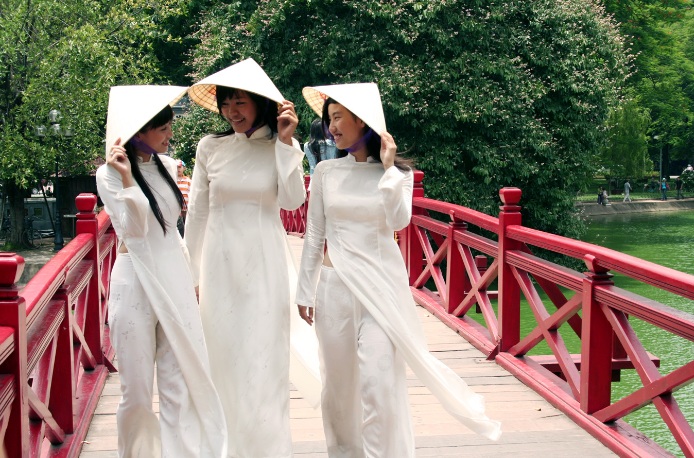
The Cao Van Lau Theatre, located in Bac Lieu, is renowned for its unique design, which incorporates three intertwined conical hats, symbols of Vietnamese culture. These structures pay homage to the region's artistic and musical heritage, particularly Đờn ca tài tử, a traditional musical genre from southern Vietnam. This style, listed as a UNESCO Intangible Cultural Heritage Site, is a form of art music combining poetry and melodies played on traditional instruments, often practiced in rural communities. The theatre is not only a vibrant cultural center but also a major architectural landmark for visitors, celebrating both Vietnamese art and tradition in architectural and cultural harmony.

The making of the conical hat
For a foreigner, conical hats arouse another curiosity: how can one create the bamboo frame and attach such thin leaves to this structure? In the making of a conical hat, everything must be done by hand. There are two main stages , each of which contains a lot of secondary work.
The first step is to prepare the materials. This is a very important step. To make a conical hat, a wooden cone-shaped shape and latanier leaves are used. This detail is very important: the leaves chosen must be fairly young and dried in the sun. You must also prepare the sewing thread and needle.
The second step is the fabrication. First, grooves are created around the conical shape. Then, this shape is covered with lataniers. Then, the grooves are sewn. Finally, the shape and the sewn fins are separated. But it takes about four or five hours of continuous, meticulous work with total concentration!
Vietnamese villages famous for the conical hat
While conical hats are a fairly common item from north to south, each region leaves a local mark on its products. In the north, Chuong village in the western suburbs of Hanoi has a national reputation for making these products.
Today, this village continues to produce thousands of conical hats every day. 80% of its population still makes a living from the manufacture and export of these products. While the daily use of these products is less common than it once was, demand for artistic conical hats for performances is increasing considerably.
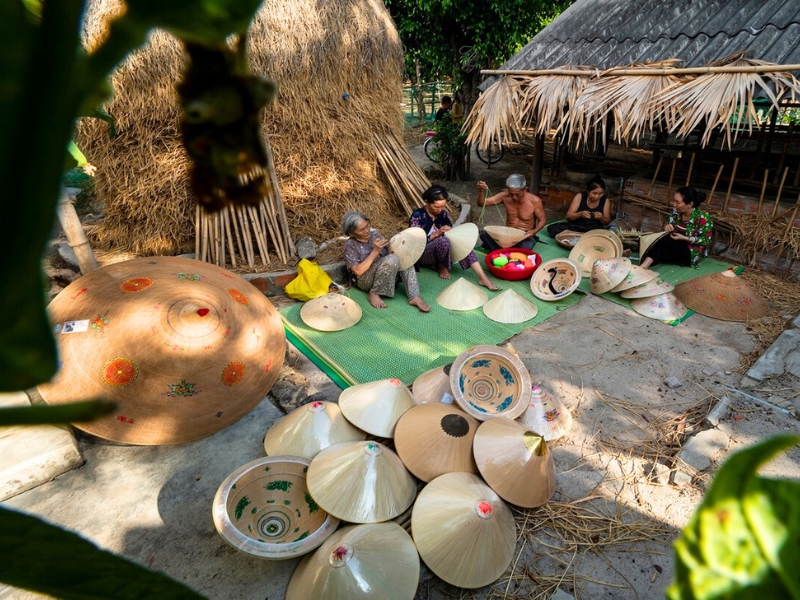
In this village, a supply market takes place every 4th and 10th day of each lunar month. The raw materials come from Yen Bai province for palm trees, Hoa Binh and Phu Tho for palm fibers, and Ha Tinh and Quang Binh for latanier leaves. The frames are made in Lua village, the bamboo circles in Trang Xuan, and the fern filaments in Dau Tê.
The conical hats of the Tay ethnic group stand out for their distinctive red color. Moving toward the center of the country, Thanh Hoa province has conical hats that differ from others with a 20-ribbed frame.
Hue Hat
In Hue, a conical hat is rather thin, but very elegant, decorated with poems or decorative images that are only clearly revealed under sunlight. It therefore rises to the rank of an object of art, rather than an object of everyday use. Phu Cam village, also called Phuoc Vinh ward, located in Hue city , has a reputation for making Hue conical hats.
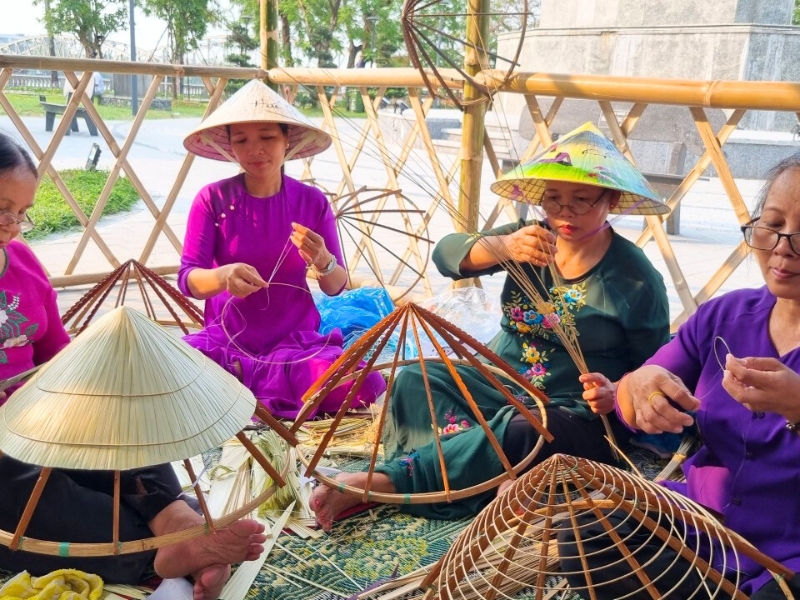
There are also a number of criteria to respect. The appearance of the hat depends mainly on the proper execution of the structure and the roundness of the passes. After mounting, the greenish-white latanier leaves are placed. The choice of leaves is very important; they must be neither too young nor too old. The Hue conical hat has 16 passes. These passes made of broken bamboo are curved, well rounded, and skillfully tied at both ends with a thread. The final step requires meticulous work consisting of sewing the latanier leaves onto the passes with a polymer thread.
Average price of a conical hat
For those who want to buy a conical hat, this information may be useful:
The price of a good Vietnamese hat (non la) is around 100,000 VND (about 4 euros).
Additionally, the Vietnamese hat for non-la women (conical hat), is regularly seen in movies.
Today, during a tour of Vietnam , on the country roads, both in the North and in the South, a visitor will certainly see women wearing such hats working in rice fields or going to the markets. Even in Hanoi, one will sometimes notice with astonishment and pleasure, among a crowd of people wearing motorcycle helmets, a few conical hats worn by retail saleswomen from the outskirts of Hanoi or Ho Chi Minh City. Real touches of charm!
Video about the conical hat – the charm of Vietnam


